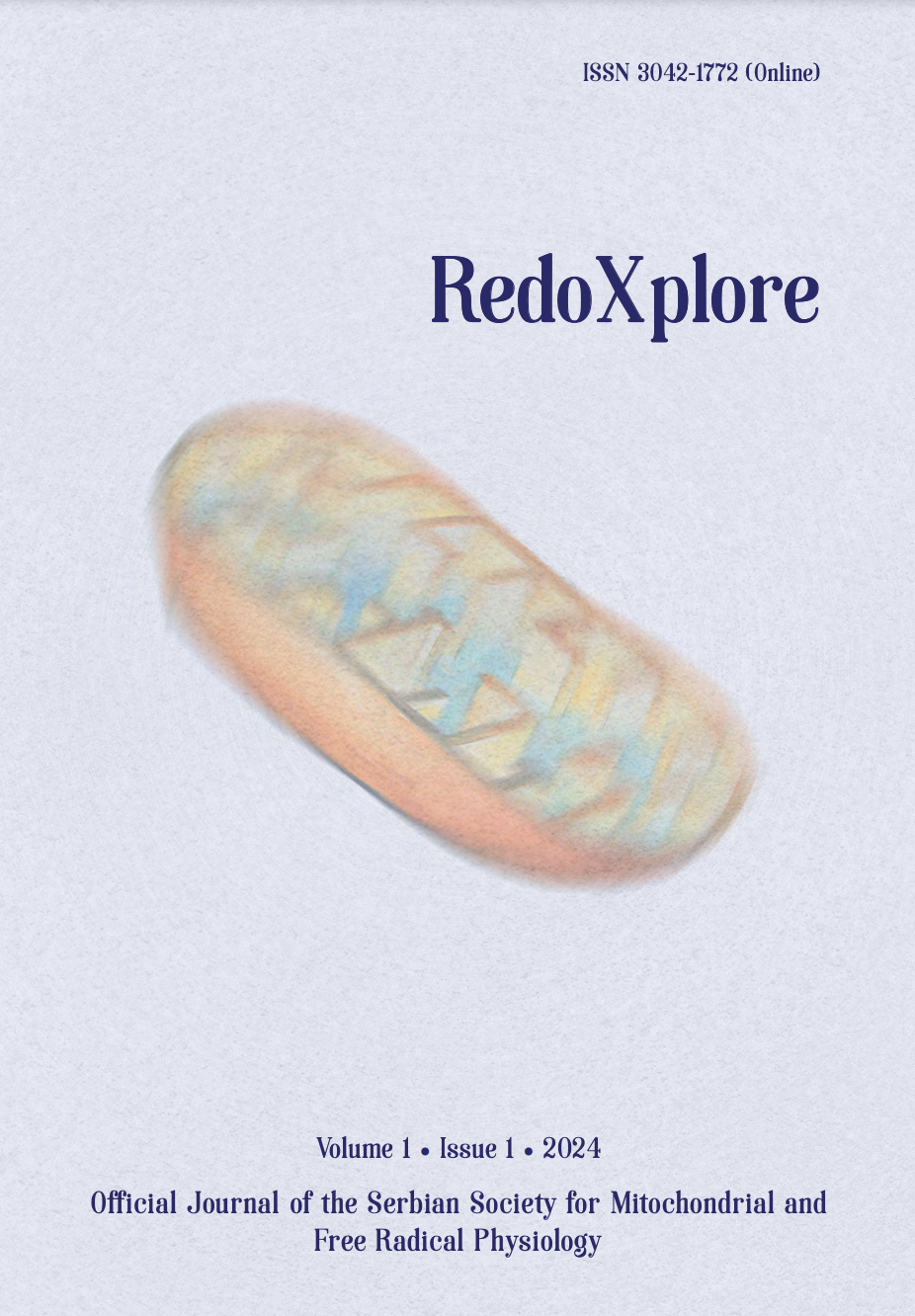
More articles from Volume 1, Issue 1, 2024
REDOX AND METABOLIC REPROGRAMMING OF BREAST CANCER CELLS AND ASSOCIATED ADIPOSE TISSUE - THE CORNERSTONES OF ADAPTIVE TUMOUR BEHAVIOUR
INSULIN MODULATES MITOCHONDRIAL STRUCTURAL AND FUNCTIONAL MOSAICISM IN BROWN ADIPOCYTES
NITRITE MITIGATES OXIDATIVE BURST IN ISCHEMIA/REPERFUSION IN BRAIN SLICES
NITRIC OXIDE, SUPEROXIDE AND PEROXYNITRITE – REDOX REGULATION OF THE CARDIOVASCULAR SYSTEM BY NITRO-OXIDATIVE STRESS AND S-NITROS(YL)ATION
DIETARY NITRATE AS PIVOT ON THE GUT MICROBIOTA-HOST REDOX COMMUNICATION
MITOCHONDRIAL DISEASE: FROM MECHANISMS TO THERAPY
Department of Biomedical Sciences, University of Padova , Padova , Italy
Veneto Institute of Molecular Medicine , Padova , Italy
Department of Biomedical Sciences, University of Padova , Padova , Italy
Veneto Institute of Molecular Medicine , Padova , Italy
Biochemistry & Biomedicine, School of Life Sciences, University of Sussex , Brighton , United Kingdom
Department of Biomedical Sciences, University of Padova , Padova , Italy
Veneto Institute of Molecular Medicine , Padova , Italy
Department of Biomedical Sciences, University of Padova , Padova , Italy
Veneto Institute of Molecular Medicine , Padova , Italy
Editor: Bato Korac
Published: 29.08.2024.
Keynote lectures
Volume 1, Issue 1 (2024)
Abstract
Mitochondrial diseases are a large family of extremely heterogeneous disorders genetically determined by mutations in either the nuclear genome or the mitochondrial DNA. Most of the mitochondrial disease genes are expressed in all cell types. However, in many conditions, some cell types are more affected than others. However, the reasons for this tissue-specificity remain poorly understood. To investigate the functional basis of the striking tissue-specificity in mitochondrial diseases, we analyzed several bioenergetic parameters, including oxygen consumption rates, Q redox poise, and reactive oxygen species production in mouse brain and liver mitochondria fueled by different substrates. In addition, we determined how these functional parameters are affected by electron transport chain impairment in a tissue-specific manner using pathologically relevant mouse models lacking either Ndufs4 or Ttc19, leading to complex I or III defects, respectively. No cure is currently available for most of the mitochondrial diseases. We previously showed that the coordinated activation of autophagy, lysosomal biogenesis, and mitochondrial biogenesis by rapamycin, ameliorated the myopathic phenotype of a muscle-specific knockout mouse for Cox15 (Cox15sm), encoding an enzyme involved in heme A biosynthesis. However, the role of mitophagy has been poorly investigated. We found that urolithin A, a direct mitophagy inducer, improved motor performance and myopathy in the Cox15sm mice, without increasing the activity of the respiratory chain complexes in a 10 week-treatment. These results indicate that activation of mitophagy can be a suitable treatment to ameliorate mitochondrial myopathies.
Citation
Copyright

This work is licensed under a Creative Commons Attribution-NonCommercial-ShareAlike 4.0 International License.
Article metrics
The statements, opinions and data contained in the journal are solely those of the individual authors and contributors and not of the publisher and the editor(s). We stay neutral with regard to jurisdictional claims in published maps and institutional affiliations.






